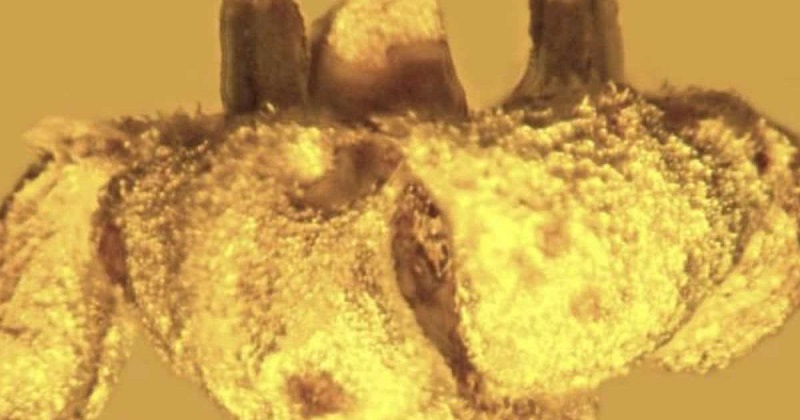
In Myanmar, scientists discovered 99 million-year-old flowers fully preserved in globs of amber, which is an extremely unusual find. According to recent research on amber, flowers previously grew at the feet of dinosaurs, and certain African blooms have stayed untouched for millions of years. They have named the two blooms Eophylica priscatellata and Phylica piloburmensis. The Society of Vertebrate Paleontology called for an embargo on research and investigation of the amber after it was discovered in Myanmar in 2016.
According to reports, these dinosaur-era amber fossils are exceptionally uncommon, occurring solely in Myanmar’s Kachin State. Flowers are considered ephemeral, which means they blossom, turn into a fruit, and then fade away. As a result, there isn’t much information on prehistoric flowers in the fossil records.
Robert Spicer, author of the study published in the journal Nature Plants, said that flowers are not generated in big quantities like leaves, which is why they have less preservation potential. He went on to say that a leaf is abandoned at the end of its life cycle, but a flower turns into a fruit, which is subsequently eaten or degraded as part of the seed dissemination process.
Also Read: School reopening guidelines released by Education Ministry
The evolution and spread of angiosperms, or flowering plants, are likely to have had a crucial influence in shaping the life we know today, according to the findings of the study. For the first time, the study found that evolution produced the diversity of mammals, insects, amphibians, and birds, resulting in a more diversified life on land than on the water.
According to Robert Spicer, the discovered ancient flowers are ‘almost identical to their modern relatives. There really are no major differences’. Robert further said that the amber has helped preserve details of such an early flower when flowering plants had just begun to spread across the globe.
The findings were also supposed to shed light on Darwin’s ‘abominable mystery’. The enigma that perplexed Darwin had to do with the abrupt appearance of flowering plants in the fossil record during the Cretaceous period, while no parental lineage from a previous geological time has been discovered.

Post Your Comments